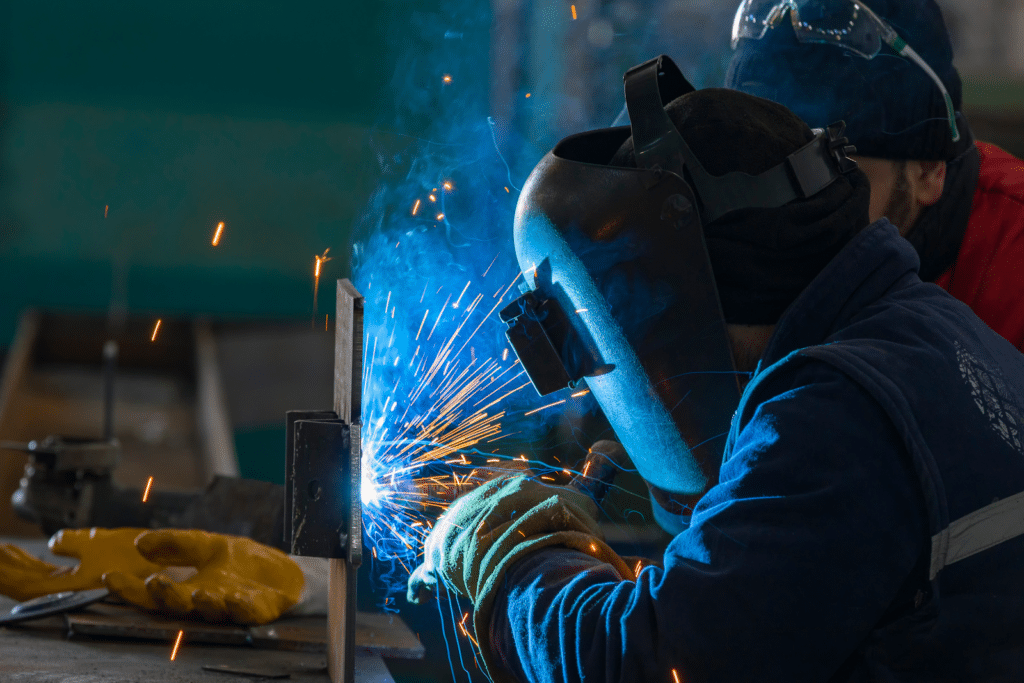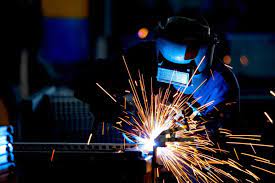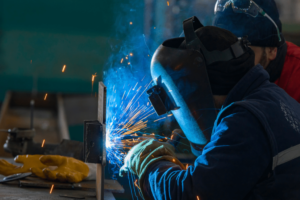When standing in awe of the magnificent Golden Gate Bridge, the intricate details of each precise weld may not catch your immediate attention. However, in our enlightening blog post titled ‘The Significance of Welding in Industry,’ we delve into the crucial role welding plays in joining metals seamlessly, enabling them to operate as a cohesive unit. Dive deeper into the world of welding by exploring a myriad of welding processes and common techniques highlighted in our blog, enriching your knowledge and appreciation of this fundamental industrial practice.
MIG Welding
MIG welding, commonly referred to as Gas Metal Arc welding (GMAW), stands out as a favored and approachable welding technique embraced by diverse industries. The process revolves around heating a solid wire to fuse metal components together, with frequent use seen in materials such as stainless steel and aluminum. Dive deeper into the realm of MIG welding to uncover its versatility when working with various alloys and thinner metal sheets, unlocking a world of possibilities in the welding domain.
SMAW welding
Stick welding, also known as Shielded Metal Arc Welding (SMAW) or Manual Metal Arc Welding (MMAW), stands out as a fundamental welding technique in the realm of metal fabrication. This traditional method involves the skilled manipulation of a metal filler electrode, commonly known as a “stick,” to create strong bonds between materials through the application of intense heat generated by electricity. The process requires precision and finesse, as the welder carefully controls the melting and solidification of the materials. In comparison to other welding methods like MIG welding, SMAW is often favored by beginners due to its perceived simplicity and accessibility, making it an ideal starting point for those venturing into the art of welding.
Shielded Metal Arc Welding (SMAW), also known as manual metal arc welding or stick welding, is a versatile welding process that meets a wide range of welding needs. It is commonly used not only at home for DIY repairs but also in the manufacturing and construction industries.
SMAW is suitable for welding various materials, including carbon steel, cast iron, and low to high alloy steel. Moreover, it can work with materials like nickel, copper, and different alloys, making it a versatile choice for diverse welding applications. Whether you are working on a small repair project or a large-scale construction endeavor, SMAW offers reliability and flexibility in joining different types of metals effectively.
TIG Welding
TIG welding, officially known as Gas Tungsten Arc Welding (GTAW), stands out as a highly precise arc welding process widely employed across a multitude of industries, especially in industrial settings. This sophisticated welding method requires a superior level of skill and proficiency in comparison to alternative techniques, thus establishing itself as the top selection amongst professionals aiming to deliver superior quality welds with precision and finesse.
The process of TIG or Tungsten Inert Gas welding is more complex than others. It uses welding wire. A TIG torch is required that heats the electrode to create an arc and ultimately weld.
It can be used for a bunch of metals, including low alloy steels, mild steels, stainless steel, nickel and it’s alloys, etc!
Plasma Arc Welding
Plasma arc welding, akin to TIG welding, is a specialized form of arc welding that finds extensive use in large-scale industrial applications. The noteworthy difference between the two lies in plasma arc welding’s utilization of ionizing gases to produce the required heat for welding, diverging from the tungsten method employed in TIG welding. Particularly prevalent in intricate sectors such as engine blade manufacturing and aerospace engineering, Plasma Arc Welding is favored for its exceptional versatility and precision, setting it apart from conventional welding methods.
Laser Beam Welding
This kind of welding does not have a lot of restrictions or controlled conditions. These welds are created by using a laser. It joins two pieces of metal as the beam provides consistent and concentrated heat. Laser beam welding is commonly used in heavy-duty welds and industrial work like auto-mobile manufacturing.





